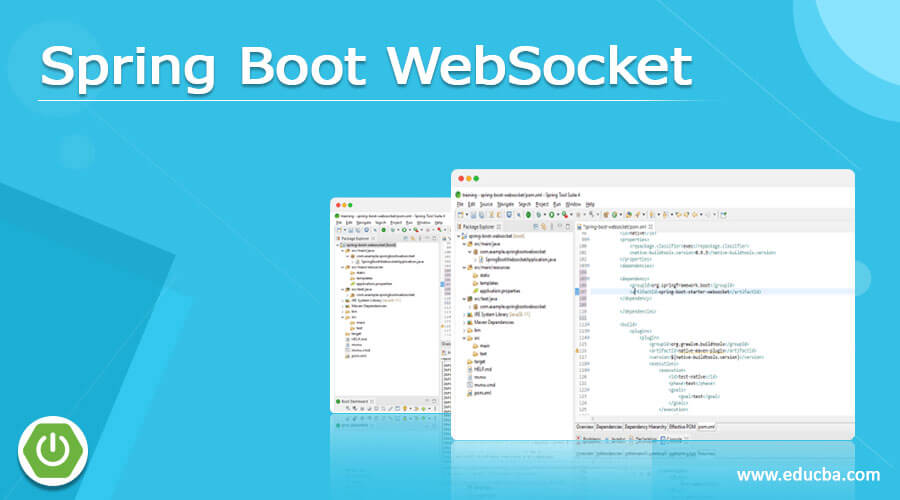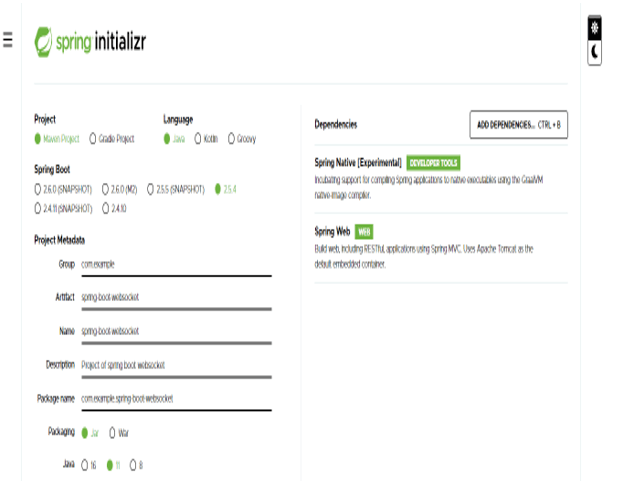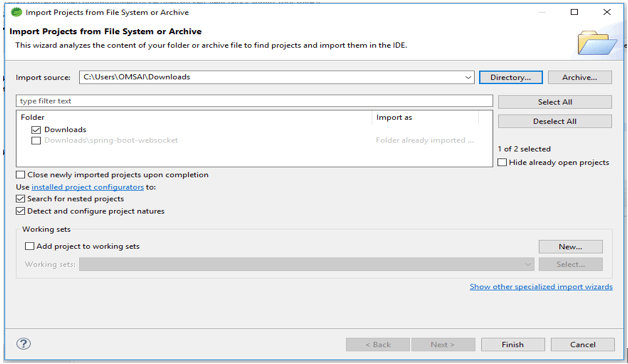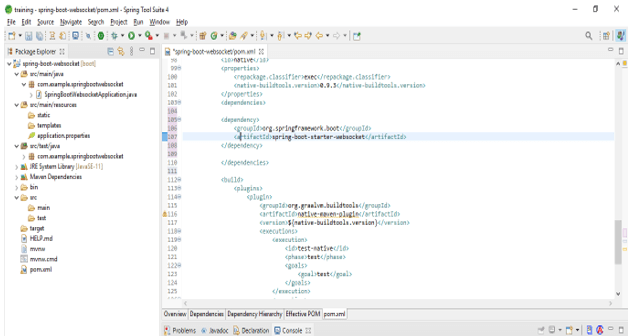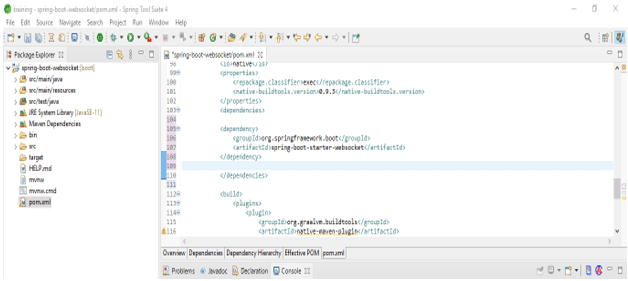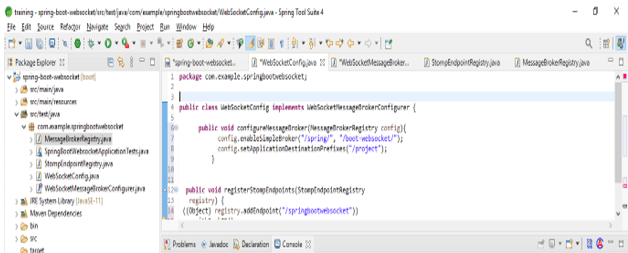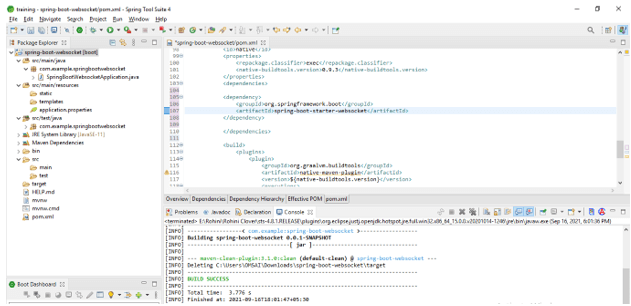Updated April 15, 2023
Definition of Spring Boot WebSocket
Spring boot websocket protocol will define the web applications’ new capability, it will define the two-way and full-duplex communication between client and server. This is a very interactive technology which included Adobe flash, XML HTTP requests, java applet, active subject, server-sent events, techniques of various comets, and many more. We can also say that it’s full-duplex, persistent, and bi-directional connection between server and web browser. Once we establish the spring boot websocket connection this connection will stay open until the client will not decides to close the connection.
What is Spring Boot WebSocket?
- The traditional HTTP request is half-duplex, the user sent a request to a server then the request serves to the client. An HTTP response from the server will send after the request is received from the client. But in the we have seen two-way communication.
- Using client and server both are taking initiative to send a message.
- Using communication between client and server is independent to each other.
- The initial we have using HTTP connection then this connection will have upgraded to the socket-based connection. It is used a single connection for all communication which was we have done in the future.
- As compare to HTTP data exchange is much lighter.
- Using client first sending the request to a server called a handshake. After sending a request via handshake server is taking via websocket.
- If the client and server response is successful, then the server is opening the connection for the client and it will close as per client needs.
- After opening the connection client and server sending messages to the endpoints of the URL.
- We can format our message at the time of sending it to the server or client but using HTTP we cannot format our message at the time of sending the client to the server and vice versa.
- We have to handle the real-time messages of our application.
- Protocol is allowing us to implement the bi-directional communication in our application.
- It is used the TCP/IP connection for handling the client and server request.
Using spring boot websocket
- For implementing applications we need to implement the server and client-side websocket.
- We are using the spring boot framework to use websocket in our application.
- It is implying on messaging architecture but it is not mandatory to use any specific protocol.
- We can say that it is a low-level protocol. It will be defining how the bytes are transforming into frames.
- The transformed iframe contains the binary or text message because the message does not contain the information regarding how to process and route it.
- It is a very thin layer onto the TCP which was transforming the stream bytes to the stream message. It’s all depends on our application to interpret the message’s meaning.
- In protocol, there is not enough information of incoming message which was sent by the client. This message does not contain the information regarding how to route and process it.
- It also defines to use sub-protocols. At the time of using subprotocol client and server is using the header name as sec-websocket-protocol. This is an application-level higher protocol.
Server-side spring-boot websocket
- To develop the server-side spring boot framework, we need to utilize the framework of spring boot which sped up the development of standalone and web-based applications.
- Spring boot uses the spring-websocket module which was compatible with the websocket of JAVA API.
- We need to add dependency of websocket in pom.xml file.
- There is no need to use subprotocol in our application, but suppose we have not used it application has the need to use a specific message format which was understood by the client and server.
- This format is framework-specific, custom, or protocol of standard messaging. It provides support by using a simple messaging protocol i.e. STOMP.
- STOMP protocol is created by using a scripting language. STOMP is a widely used and supported protocol.
Examples
1) Create a project template using spring initializer and give the following name to the project metadata.
Group – com.example
Artifact name – spring-boot-websocket
Name – spring-boot-websocket
Description – Project of spring-boot-websocket
Package name – com.example.spring-boot-websocket
Packaging – Jar
Java – 11
Dependencies – spring web, spring native.
2) After generating the project extract files and open this project by using the spring tool suite.
3) After opening the project using the spring tool suite check the project and its files.
4) Add the websocket library dependency.
Code:
<dependency> -- Start of dependency tag.
<groupId>org.springframework.boot</groupId> -- Start and end of groupId tag.
<artifactId>spring-boot-starter-websocket</artifactId> -- Start and end of artifactId tag.
</dependency> -- End of dependency tag.5) Configure the spring to enable stomp messaging and web socket –
public class WebSocketConfig implements WebSocketMessageBrokerConfigurer {
public void configureMessageBroker (MessageBrokerRegistry config){
config.enableSimpleBroker ("/spring/", "/boot-websocket/");
config.setApplicationDestinationPrefixes ("/project");
}
public void registerStompEndpoints (StompEndpointRegistry
registry) {
((Object) registry.addEndpoint ("/springbootwebsocket"))
.setAllowedOrigins ("mydomain.com").withSockJS();
}
}6) Implement the controller –
After implementing the stomp messaging next step is to implement the controller.
Code:
@MessageMapping ("/spring")
@SendTo ("/boot/websocket")
public String broadcastNews (@Payload String message) {
return message;
}7) Auto write the stomp spring client –
In this step, we have writing the stomp spring for the server and client connection are as follows.
Code:
@Autowired
private WebSocketStompClient stompClient;8) Open connection –
In this step, we have to open the client and server connection. Once the connection is open we can send a message.
Code:
StompSessionHandler sessionHandler = new CustmStompSessionHandler();
StompSession stompSession = stompClient.connect (loggerServerQueueUrl,
sessionHandler).get ();9) Clean and build the project –
Conclusion
Using spring boot websocket communication between client and server is independent to each other. It’s a full-duplex, persistent, and bi-directional connection between server and web browser or client. Spring boot websocket protocol is allowing us to implement bi-directional communication.
Recommended Articles
This is a guide to Spring Boot WebSocket. Here we discuss the definition, Examples with code implementation. You may also have a look at the following articles to learn more –

